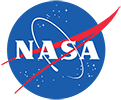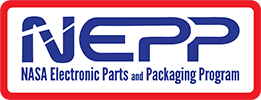

|
| ||||||||||||||||||||||
|
Home | NASA Parts Selection List (NPSL) | Cadmium Plating Prohibition |
|
Parts Selection Table of Contents
Other Space Agency European Space Agency (ESA) Japan Aerospace Exploration Agency
(JAXA) |
Cadmium Plating ProhibitionPolicy: Cadmium plating is prohibited on EEE parts and associated hardware. In some applications use of Cadmium plating may be acceptable via a Project approved waiver process that includes review and approval by both Materials and Parts Engineering disciplines. Reference:
Rationale: There are several reasons for prohibiting the use of Cadmium plating in space flight electronic systems.
Recommendations: Cadmium plating is commonly used on connectors, connector hardware and mechanical hardware such as fasteners. It provides excellent resistance to salt corrosion and is therefore offered in many military specifications predominantly for use in naval applications. However, most NASA applications are not concerned with salt corrosion and the risks associated with use of Cadmium plating noted above outweigh the benefits of its use in spaceflight applications. There are several alternatives to Cadmium plating that are suited for spaceflight use. For connectors, electroless nickel plating is preferred. Gold plating is preferred when the application requires additional shielding effectiveness or low residual magnetism. Passivated stainless steel is the preferred material for hardware items such as fasteners. Consult your materials or parts specialists for suggested alternatives to Cadmium plating. |
|
|
| NEPP Program Manager: | Peter Majewicz |
| Responsible NASA Official: | Peter Majewicz, NEPAG Manager |
| Website Comments: | Web Development Team |
| Last Modified: | September 20, 2001 |